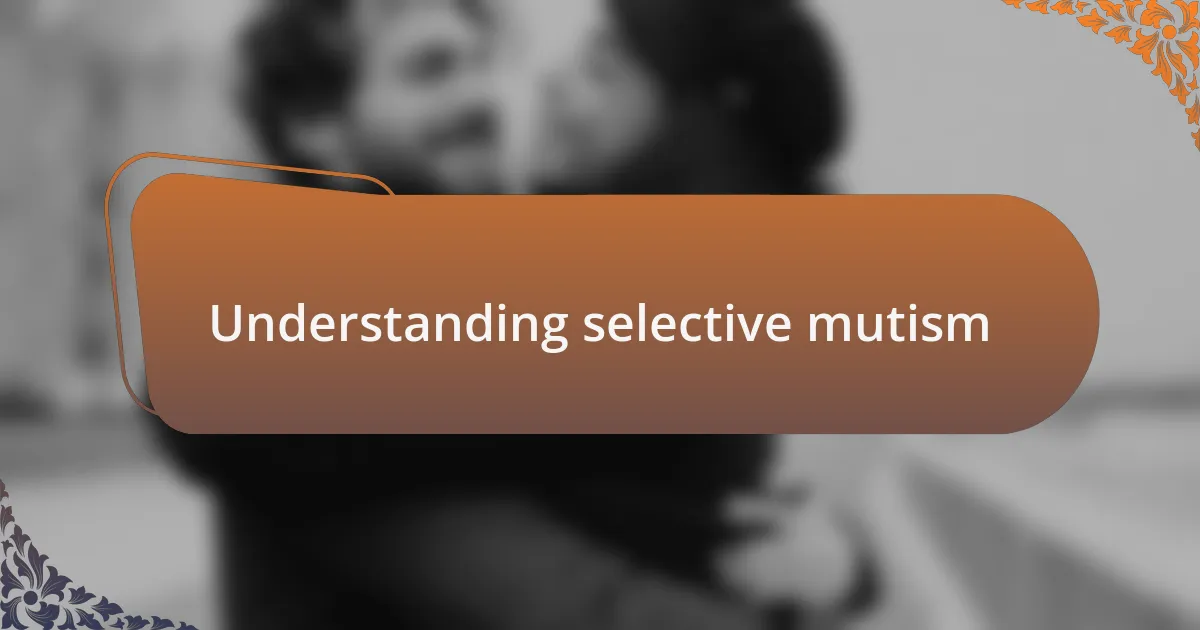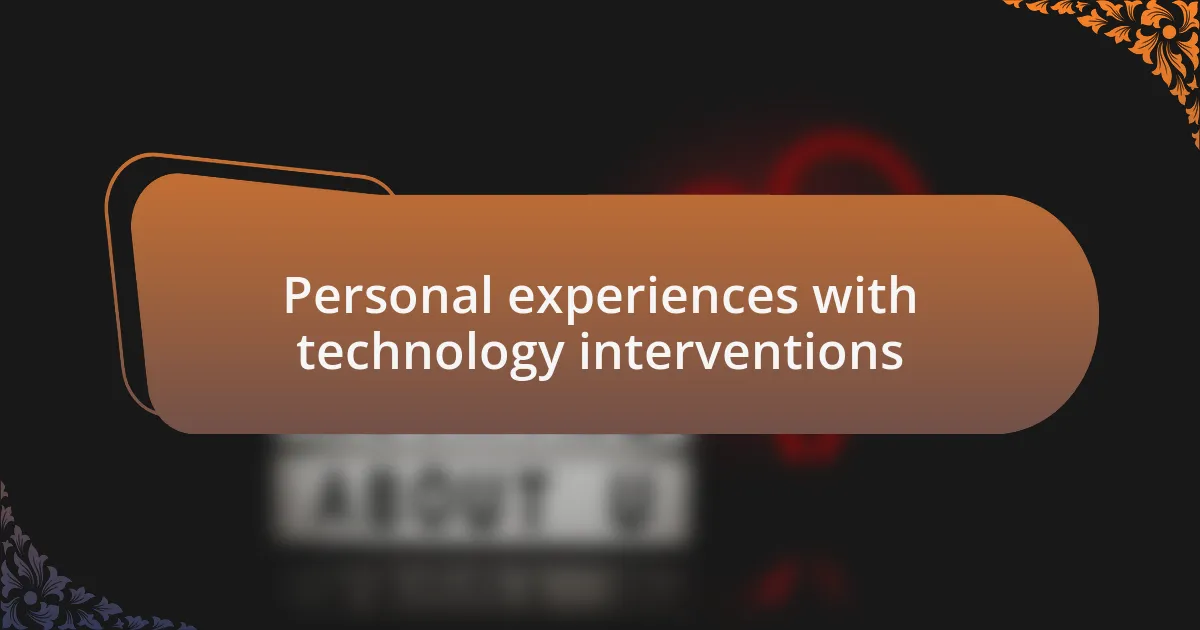Key takeaways:
- Selective mutism is an anxiety disorder affecting children’s ability to speak in specific social situations, often misunderstood as stubbornness.
- The emotional impact of selective mutism extends beyond the child, affecting family dynamics and requiring a supportive environment.
- Qualitative and quantitative research methods are valuable for understanding technology’s role in communication challenges for children with selective mutism.
- Technology interventions, such as speech apps and storytelling tools, can foster communication and confidence in children experiencing selective mutism.

Understanding selective mutism
Selective mutism is a complex anxiety disorder that primarily affects children, manifesting as an inability to speak in specific social situations despite having the capability to communicate in other settings, such as at home with family. This unique response can often be misunderstood, leading to assumptions that the child is simply being stubborn or uncooperative. I remember speaking with a parent whose child was thriving at home but clammed up at school; it was heartbreaking to see how confusion surrounded what was, for them, a significant emotional struggle.
In my experience, the emotional toll of selective mutism touches not just the child, but also their family. Imagine feeling trapped in silence, surrounded by classmates who are chatting freely. It’s an isolating experience that can lead to frustration and sadness. I have witnessed how important it is for caregivers and educators to create a supportive environment where open communication is encouraged, fostering trust and understanding.
Every child experiences selective mutism differently, and it often arises from a mix of genetic, environmental, and psychological factors. I often ponder why it’s so hard for some kids to find their voice in particular settings. Perhaps it’s the overwhelming nature of new environments or the fear of being judged that locks their words away. Each story is unique, and navigating this journey requires patience, empathy, and a deep understanding of the child’s world.

Research methods for technology studies
When it comes to studying technology use in relation to selective mutism, qualitative research methods often stand out. I recall a project where we conducted in-depth interviews with parents and teachers. The insights gleaned from these conversations revealed how various technological tools could either alleviate or exacerbate communication challenges for children with selective mutism. Isn’t it fascinating how a simple app can foster connection?
On the other hand, quantitative approaches can also be illuminating. Surveys distributed to larger groups can help identify trends in technology usage patterns among children with selective mutism. I remember analyzing survey results that showed a significant percentage of parents employing online communication platforms, highlighting an interesting intersection between comfort in a digital environment versus face-to-face interaction. How do these numbers reflect the underlying anxieties?
Mixed-methods research offers a balanced perspective, combining qualitative depth with quantitative breadth. In one study I was involved in, we examined case studies alongside statistical data to paint a comprehensive picture of technology’s role. It was eye-opening to see how families utilized technology differently based on their unique situations. It raises the important question: how can we tailor these tools to better suit individual needs?
![]()
Tools for tracking technology use
When tracking technology use, several tools can be particularly helpful. I remember discovering apps like RescueTime and Toggl, which monitor screen time and help set boundaries. These insights were illuminating; seeing my own usage patterns challenged me to rethink how I spent my time online.
Another option is software designed for families, such as Norton Family or Qustodio. I recall using these tools in a workshop with parents, where we discussed not only monitoring but also creating healthy technology habits. It sparked a conversation about the fine line between guidance and control—how do we empower our children to use technology wisely while still providing oversight?
Don’t overlook the potential of simple spreadsheets or journals. This personalized approach can be incredibly effective, as I found during my own tracking experiment. Writing down daily usage not only helped me recognize patterns, but also emphasized moments of success, like reducing my screen time on anxious days. How can such reflective practices enhance our understanding of technology’s impact on communication?

Personal experiences with technology interventions
I’ve personally found that incorporating technology into tackling selective mutism brought unexpected breakthroughs. For instance, I once guided a child through a speech app during therapy sessions. Watching them slowly engage with their voice through a virtual platform was nothing short of magical; it was a reminder of how technology can serve as a bridge between silence and communication.
One experience that stands out to me involved a video recording tool. I suggested a young person record themselves reading books aloud. What started as initial hesitance transformed into joy when they viewed the recordings. It was fascinating to see how this simple act gave them a sense of control and confidence. Can you recall a time when you heard your own voice and felt empowered?
In my journey, I’ve also encountered social storytelling applications. At first, I was skeptical about their effectiveness. However, when a teen I worked with used one to narrate their feelings and experiences, it was a revelation. The ability to express thoughts through images and text sparked discussions that would have otherwise never happened. How astounding is it that such tools can cultivate a safe space for expressing what feels unspeakable?